1lumen selects and reviews products personally. We may earn affiliate commissions through our links, which help support our testing.
Xtar B20 review
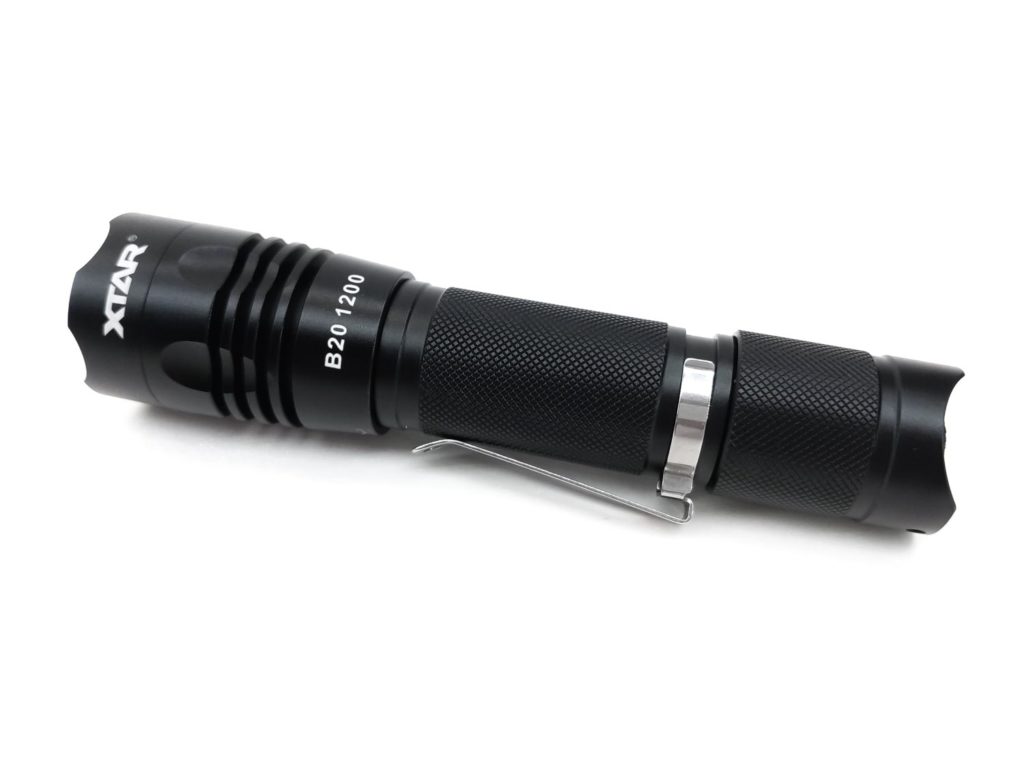
Xtar B20 (2021 model) specifications
| Brand/model | Xtar B20 1200 (2021 model) |
|---|---|
| LED | Cree XP-L2 |
| Lumens | 1,200 lm |
| Beam intensity | 14,400 cd |
| Battery config. | 1*21700 |
| Material | Aluminum |
| Modes | 4 |
| Blinkies | Strobe |
| Reflector | Smooth |
| Waterproof | IPX8 |
| Review date | July 2021 |
Introduction:
Chargers. If you’re like me, that’s the first thing you think of when you see Xtar. And for good reason, too. Xtar makes a wide array of really nice chargers. And I’ve owned many of them, including several MC1 Plus scattered in various places and the VC2 Plus as my go-to for a few years. While I’ve known that Xtar also makes flashlights and headlamps, I’ve never owned one. Recently Xtar asked if we’d like to review the T2 (well, yes I would!) and if they could send the B20 along to also be reviewed. Well, the only thing I could dig up on the B20 was a years-old flashlight still running an XM-L2. I figured they must have made some updates that weren’t public yet. And indeed that is the case, the Xtar B20 has seen several updates for 2021. Let’s explore what’s new!
Package quality.
The packaging of the Xtar B20 arrived a bit crumpled. Thankfully the damage was skin deep and the contents of the package were just fine. The box is fairly plain white, lightweight cardboard with specifications listed on the outside. Inside was a plastic tray chock-full of goodies:
- Xtar B20 flashlight
- 21700 battery (outside of the flashlight)
- Spare o-rings
- Lanyard
- Clip (installed)
- SC1 charger
- Micro-USB cable
- Manuals (one for the flashlight, one for the charger)
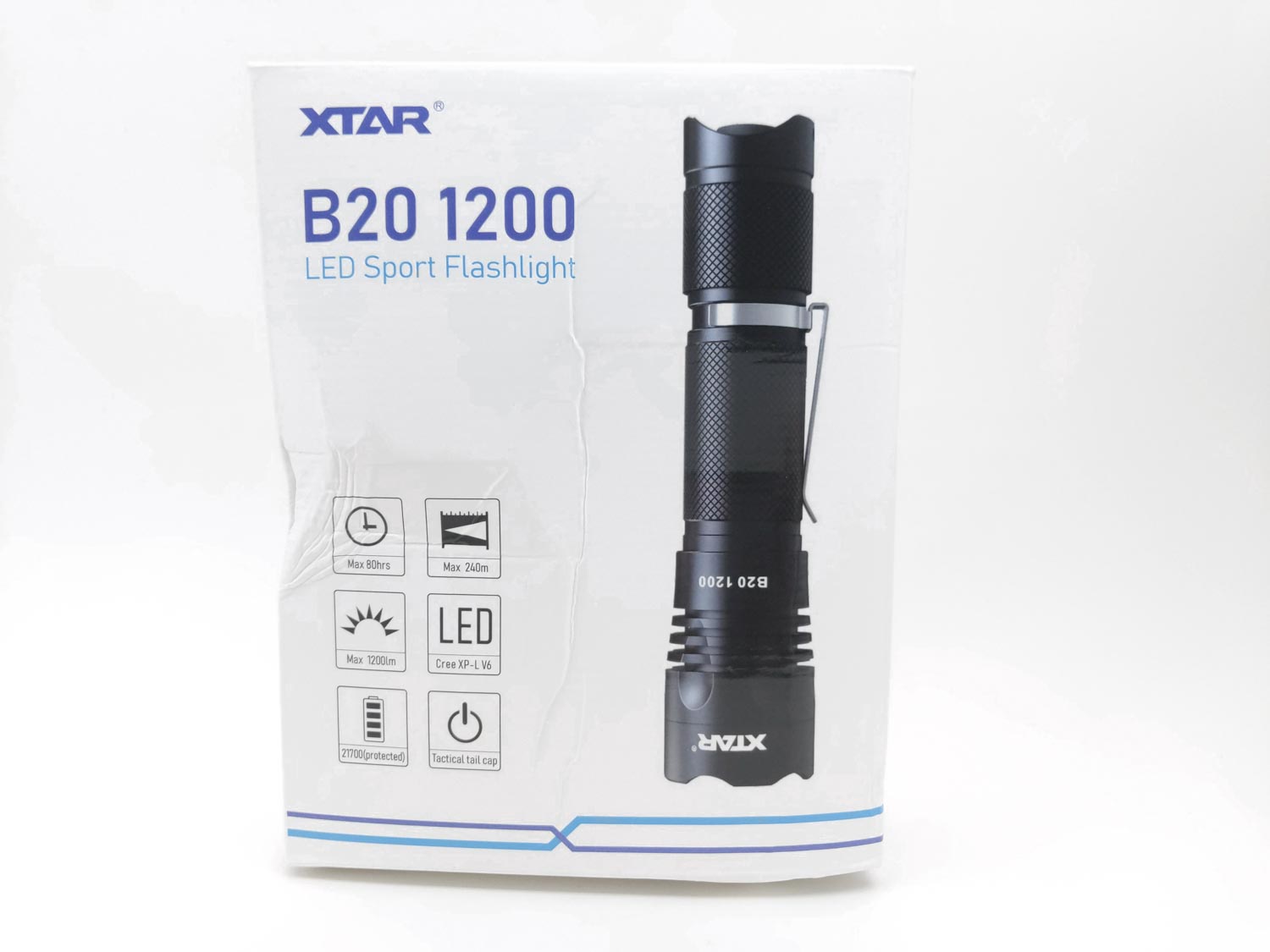
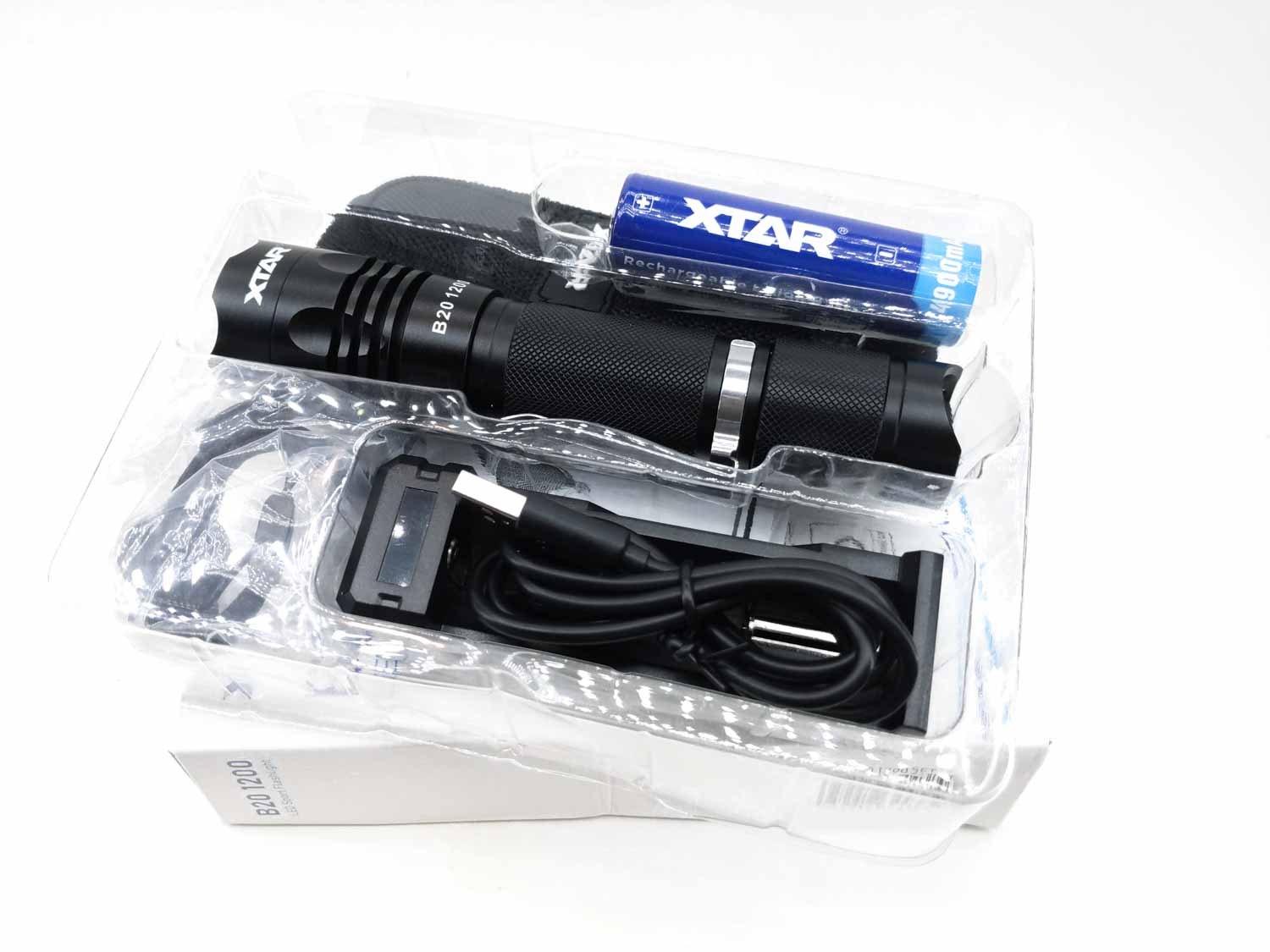
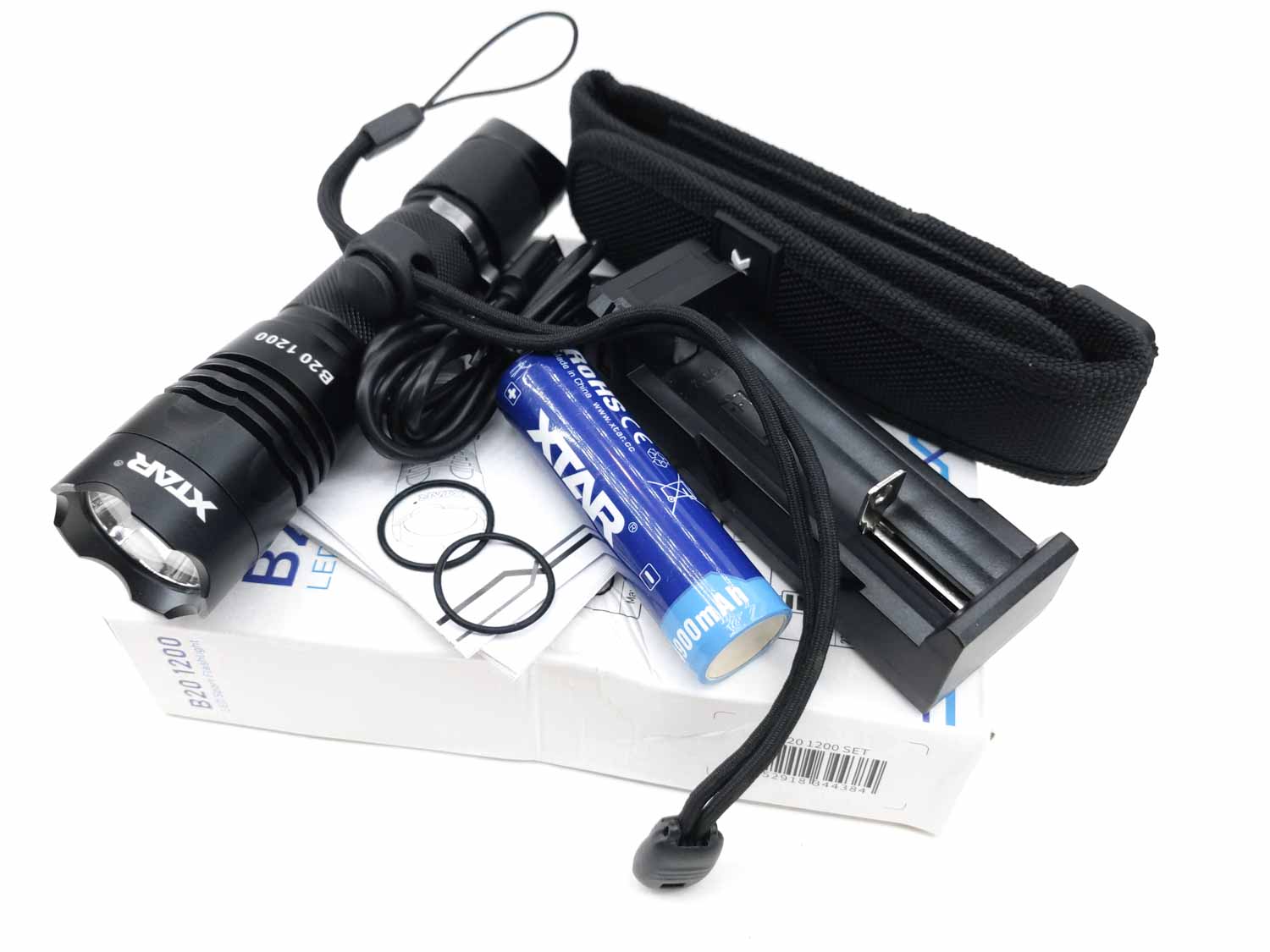
Flashlight in use
I know I’ve said this a bit before, but 21700-based lights are really starting to grow on me. The size seems to be pretty comfortable to hold and use. Certainly not as pocketable as a 18650, but the added battery capacity is welcomed. The overall design of the Xtar B20 reminds me of the Convoy M21B (the 21700 version of the M1), which I consider to be a good thing as I really like those lights.
The tailcap is what I consider a “saddle style” which has cutouts that make activation easier, especially with gloves on. The B20’s only switch is in the tailcap, a forward-clicky. The button-feel is firm and the tailcap does allow tail-standing. The overall body shape would allow it to roll around on a smooth surface would it not be for the pocket clip. The clip is stainless steel and quite hefty, definitely not deep carry. The included lanyard / wrist strap is fine quality and has a sliding adjustment bead.

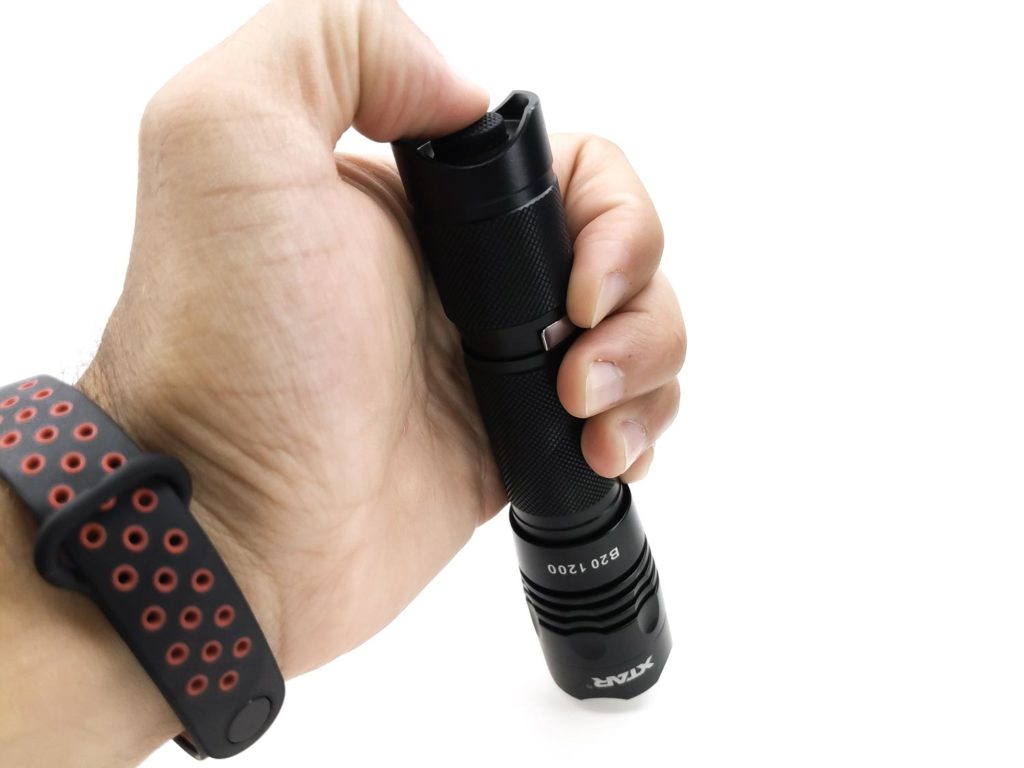
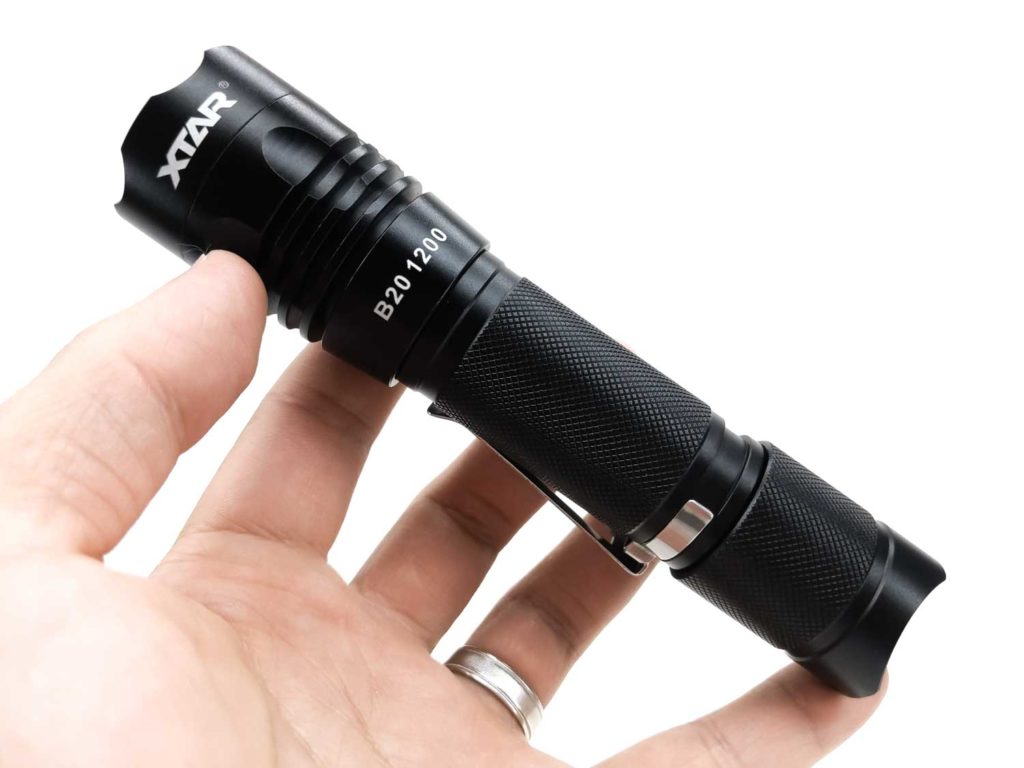
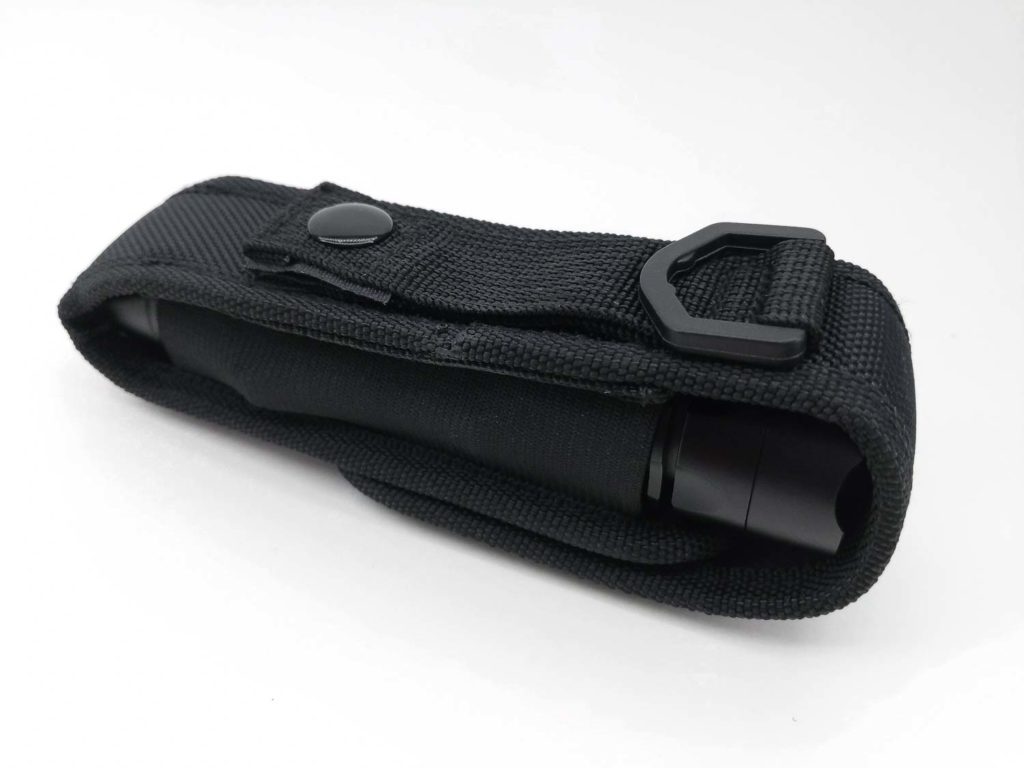
Build Quality, and Warranty
From what I can see at the moment, Xtar doesn’t say what kind of anodizing the B20 has. But considering the previous B20 had HA III anodizing and that my sample hasn’t been marred at all despite removing and reinstalling the clip several times, I’m guessing this new version is also HA III. The coating is fairly shiny, but not like some of the cheaper lights out there.
The knurling pattern is fine (shallow) and provides a minimal amount of grip. It’s very clean cut and looks good. The threads are anodized and also clean cut, but perhaps a bit fine. There’s quite a few of them and they mesh well together so I see no concern of them getting stripped. The threads came pre-lubed with something that appears to be blue.
Xtar’s warranty includes:
- 15 days free replacement
- 24 months free repair
- Beyond 24 months, free repair but end-user is responsible for parts
- Lifetime technical support
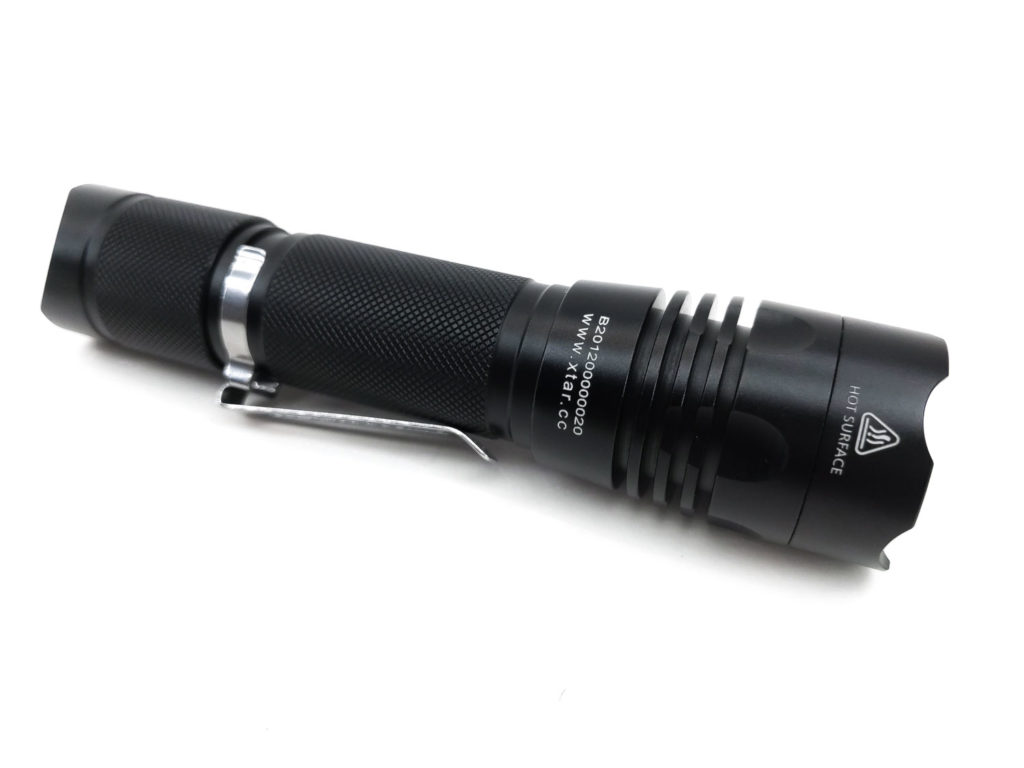
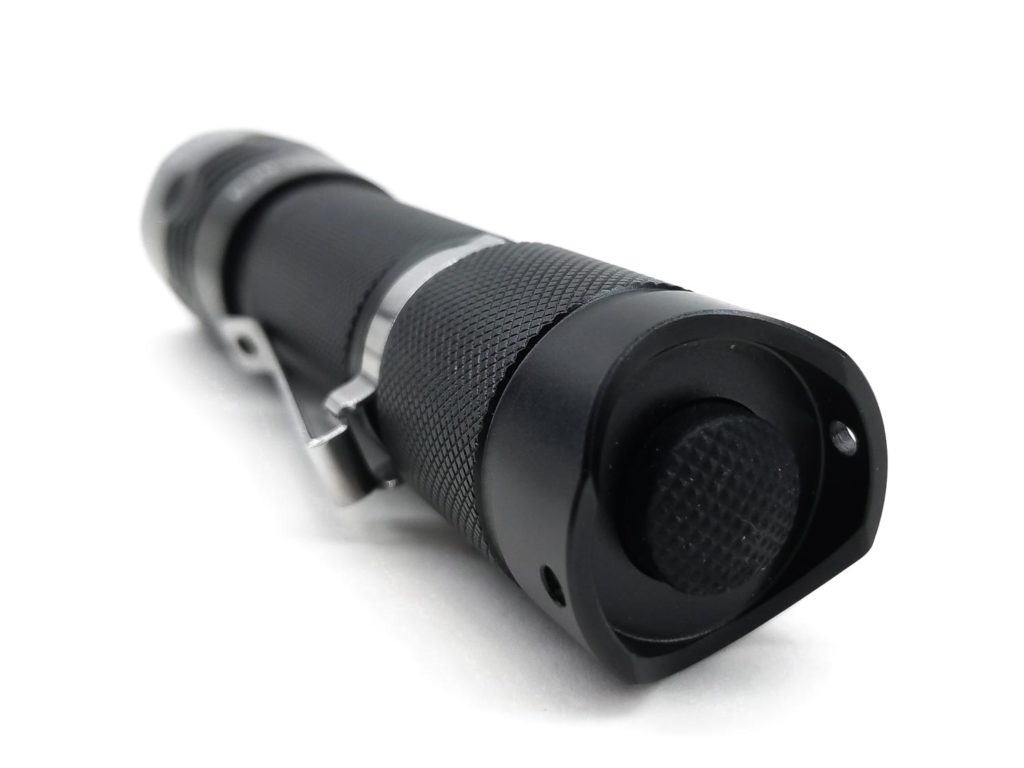
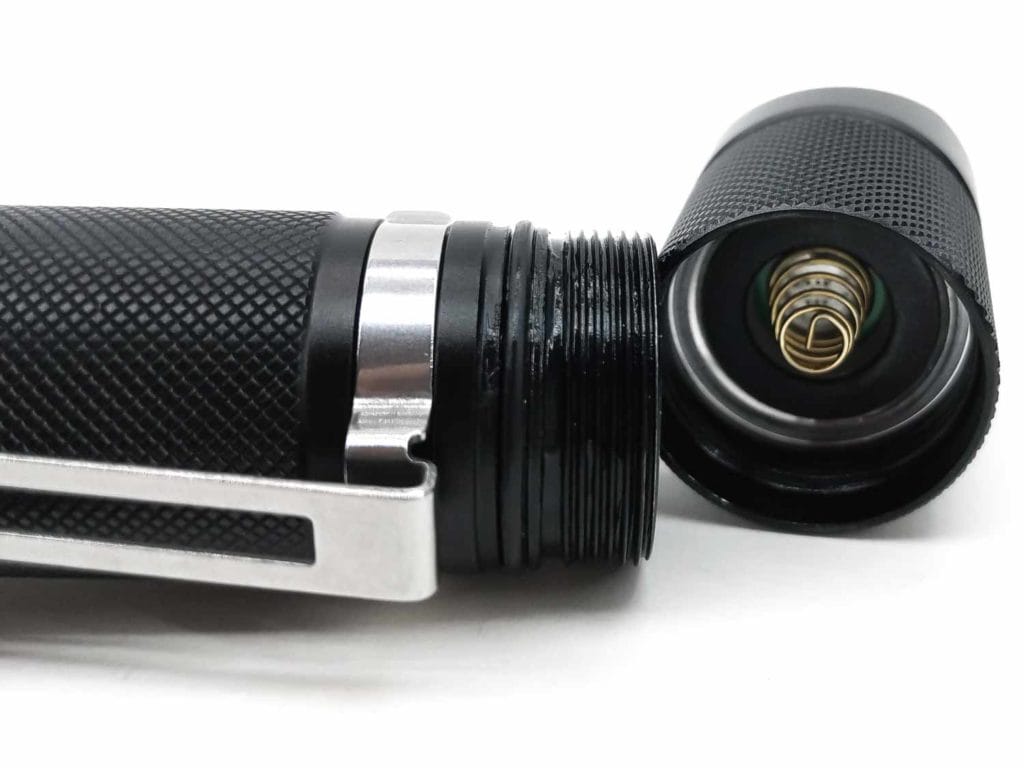
LED, Lens, Bezel, and Reflector
Xtar says that the new B20 uses a Cree XP-L V6 LED and that’s sorta true, but not completely. There are two things that immediately tell me this is actually a Cree XP-L2 LED: (1) the LED’s substrate is completely covered in phosphor, and (2) the beam has the tell-tale “Cree rainbow” that’s visible with almost all of their newer flip-chip LEDs. Especially with the smooth reflector that Xtar used for the B20, the tint shift is very easy to see, particularly indoors. The CCT isn’t specified, but if I were to guess I’d say it’s around 5700K. Between the fairly floody LED and the medium-sized reflector, I would classify the B20 as a medium-distance flashlight, good for looking around backyards and walking trails and such.
After the struggle I went through with the Xtar T2, I was very pleased to find that the bezel of my B20 is not glued and removed easily by hand. I didn’t measure, but it looks like the MCPCB may be around 16mm which would make LED swaps incredibly easy. The battery tube is glued on, so if you’re interested in having a peek at the driver, you’d better get your tools out. And I’m guessing that’d void your warranty, so proceed with caution.
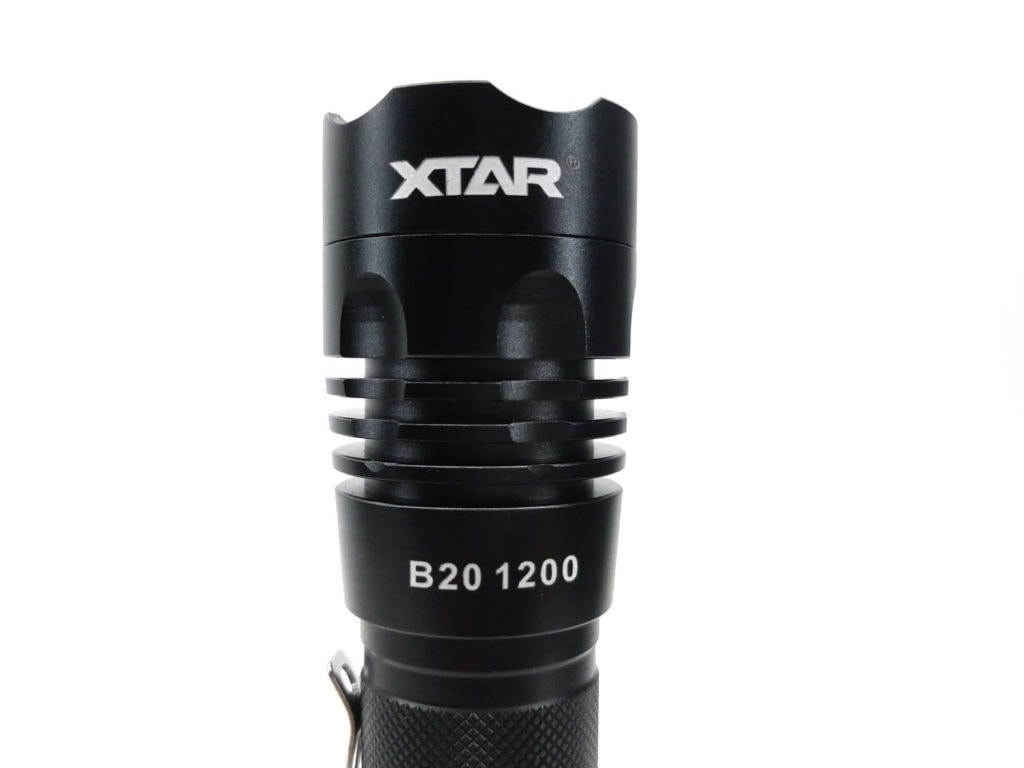
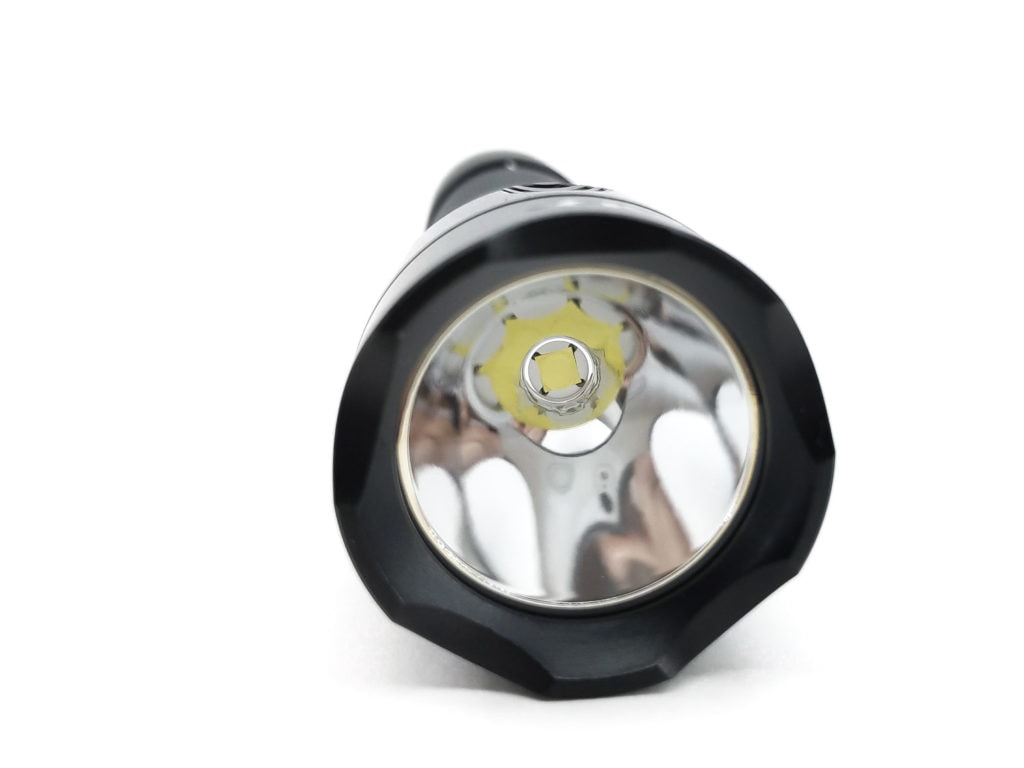
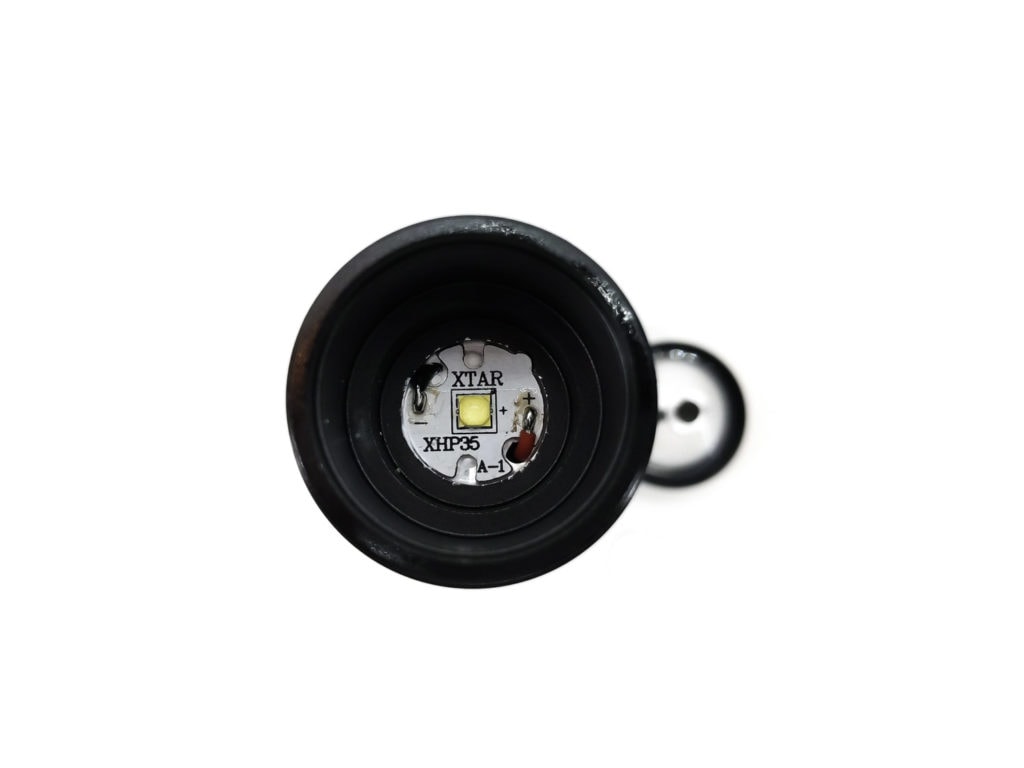
Dimensions and size comparison
- Length: 146.3 mm / 5.76 inches
- Head diameter: 34.5 mm / 1.36 inches
- Body diameter: 26.8 mm / 1.06 inches
Weight:
- Without cells: 122 grams / 4.3 oz
- With cells: 192 grams / 6.8 oz
Flashlight comparison
21700-based flashlights from left to right: Sofirn SP35, Nitecore P20iX, Xtar B20 1200, Astrolux EC01, Amutorch E3
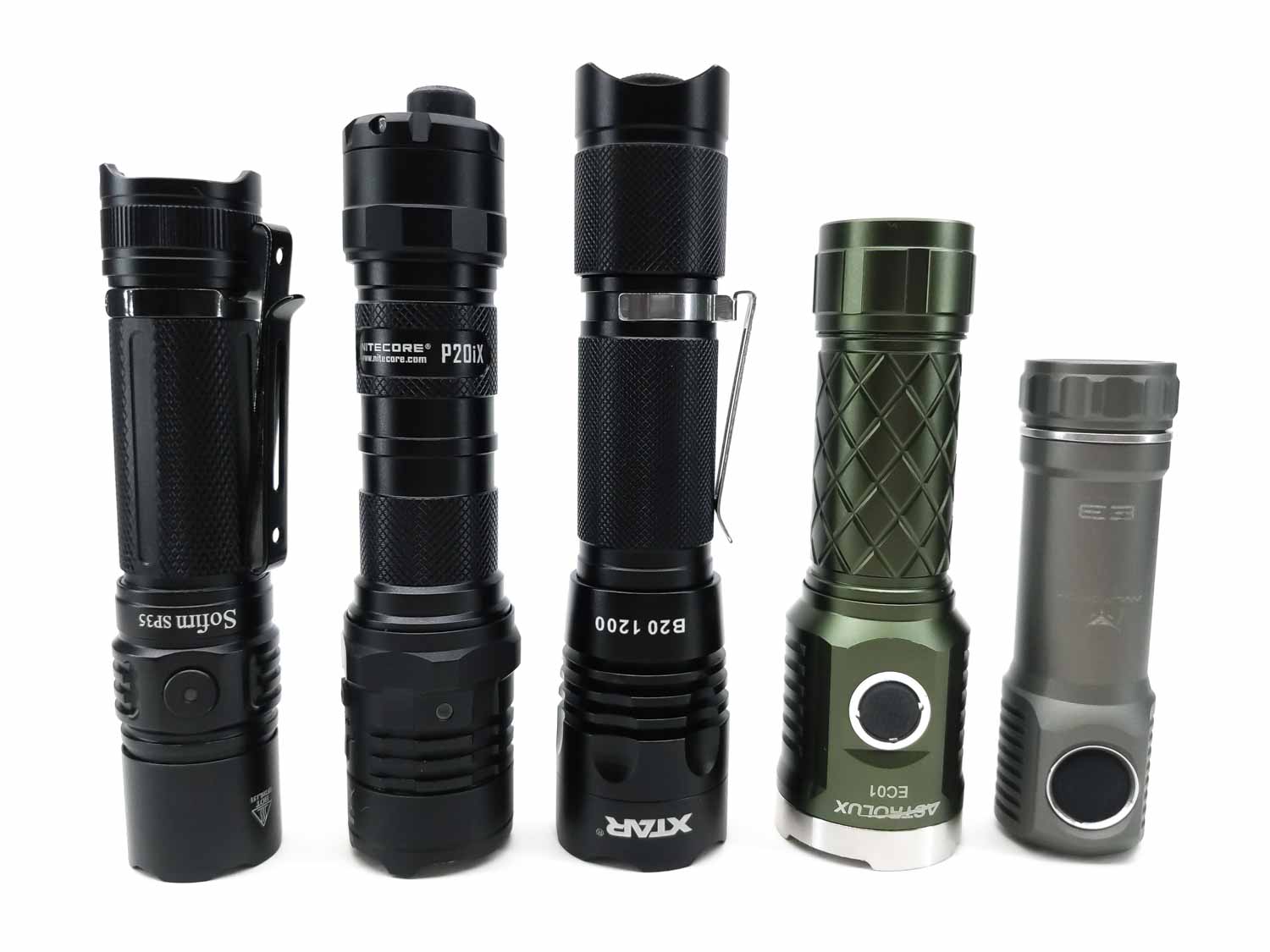
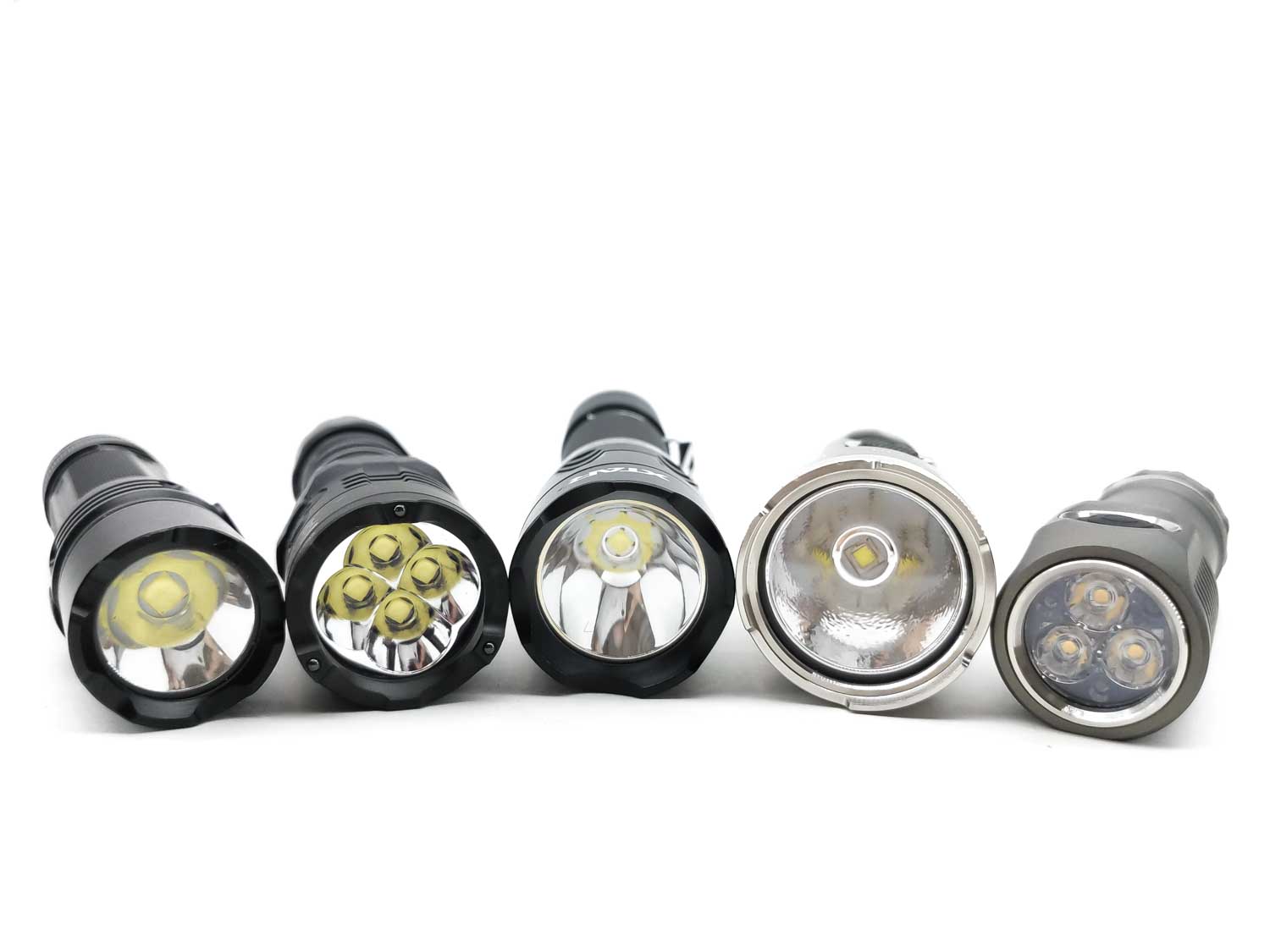
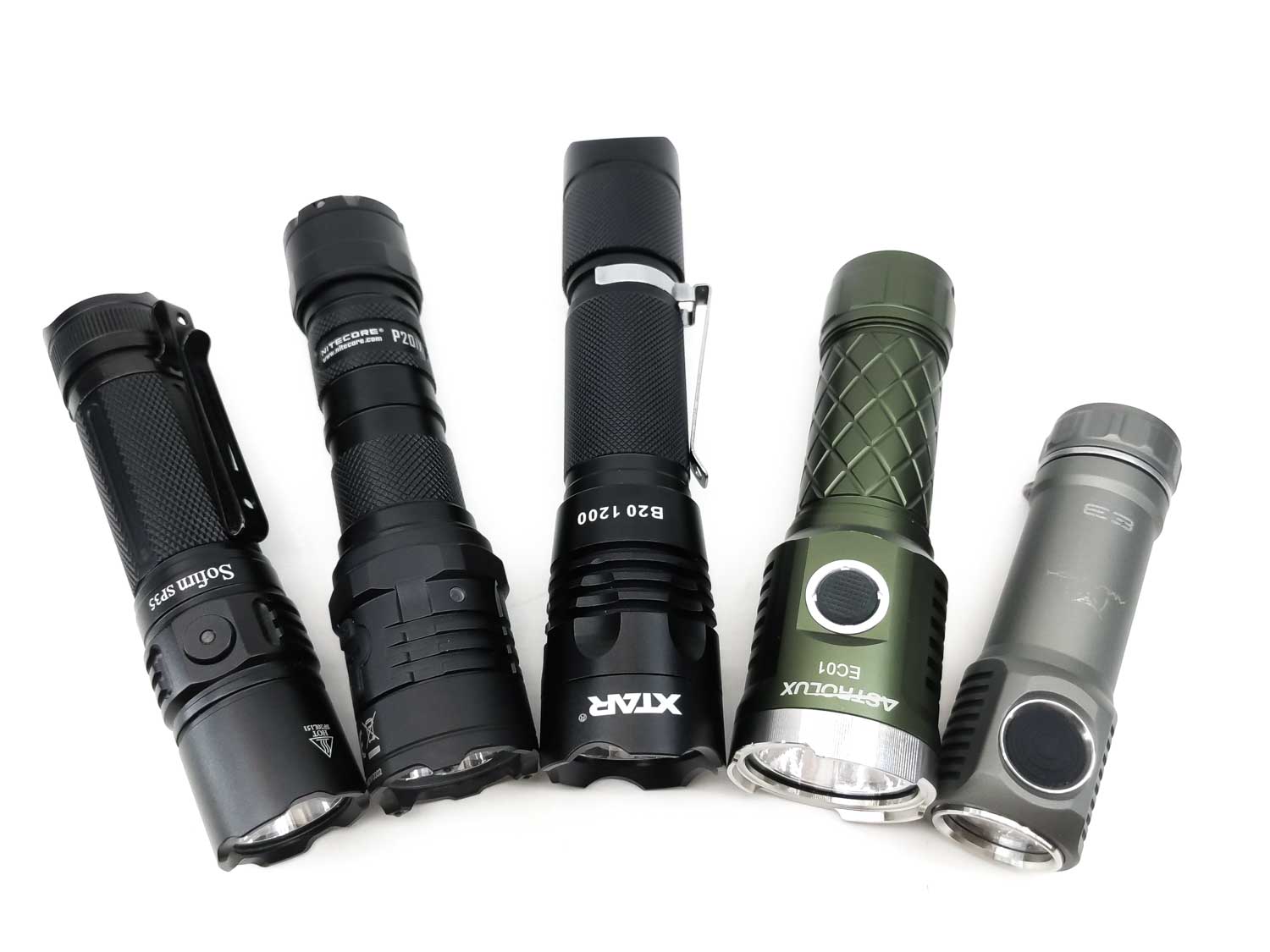
Driver & User Interface:
The Xtar B20 1200 features what appears to be a buck driver (generally very efficient). There are four decently spaced modes, though I’m dumbfounded at the mode order: High, Turbo, Mid, Low. No matter how you slice that, it’s just a strange mode order. I hope it makes sense to some and that they can explain it to me.
Modes: Low, Mid, High, Turbo
From OFF:
- Press and Hold halfway: momentary on
- Single click: last used mode
- Triple click: strobe
From ON:
- Single click: turns off
Mode memory:
- Yes, mode memory is present (will not memorize strobe)
Low voltage warning:
- The output of the B20 will blink 4 times when the battery is getting low (the manual says 3 but I observed 4 in all tests)
Strobe/blinkies
- There is one strobe mode, no other blinkies
Lock-out mode:
- This is a clicky light, no lock-out unless you want to unscrew the tailcap for extra protection
PWM
- I was able to measure (not see) 64.2 kHz PWM in Low mode using a photo-diode and my DMM.
- No PWM was detected in Mid, High, or Turbo
Additional info on the UI:
- Xtar says that triple click should be Strobe and doesn’t mention any action for a double click. But in my testing, I can very easily and repeatedly enter Strobe mode using a double click (and not a triple click). In addition to being overly easy to activate accidentally, I would frequently get into Strobe mode when just trying to change modes.
Batteries & Charging
The Xtar B20 1200 takes 21700 batteries (unlike the original B20 which was 18650). It arrived with an Xtar-branded button-top 4900 mAh 21700 cell that appears to have a protection circuit. I also tried several other batteries for fitment:
- Epoch 5000 mAh (Samsung 50G): fits
- Molicel P42A: fits
- Vapcell T50: fits
- Sofirn 4000 mAh: surprisingly too wide, doesn’t fit
- Acebeam protected 5100 mAh: fits fine, despite being ~3mm longer
While the B20 doesn’t have built-in charging, it did arrive with a nice Xtar SC1 charger in the box. The SC1 is a single-slot 2-amp Micro-USB charger with a four-bar charging indicator (none of that red-green business). The display is easy to read and it’s pretty compact, and since it’s Micro-USB powered (no USB-C here yet, folks) you can still power it almost anywhere. I measured a bit lower than the 2-amp spec, it charged the included battery at 1.3 amps / 6.3 watts as measured at the USB cable. One charge cycle took 4 hours and 8 minutes, while another one took 4 hours and 26 minutes. I think part of the lower charge rate and extended charge times is possibly explainable by how low the Xtar B20 discharged the battery. I left the Turbo test running overnight. When I woke up the next morning, the B20 was lit up around 0.2 lumens. I measured the battery voltage at 2.48 volts. Apparently, the B20 has a voltage warning but no voltage protection. Stranger yet, the battery itself has a protection circuit, yet it didn’t stop the battery from getting depleted way down. Considering most people consider 2.80 volts to be the bottom end of lithium-ion voltage range, I’m not happy to see how far the B20 drew down the battery.
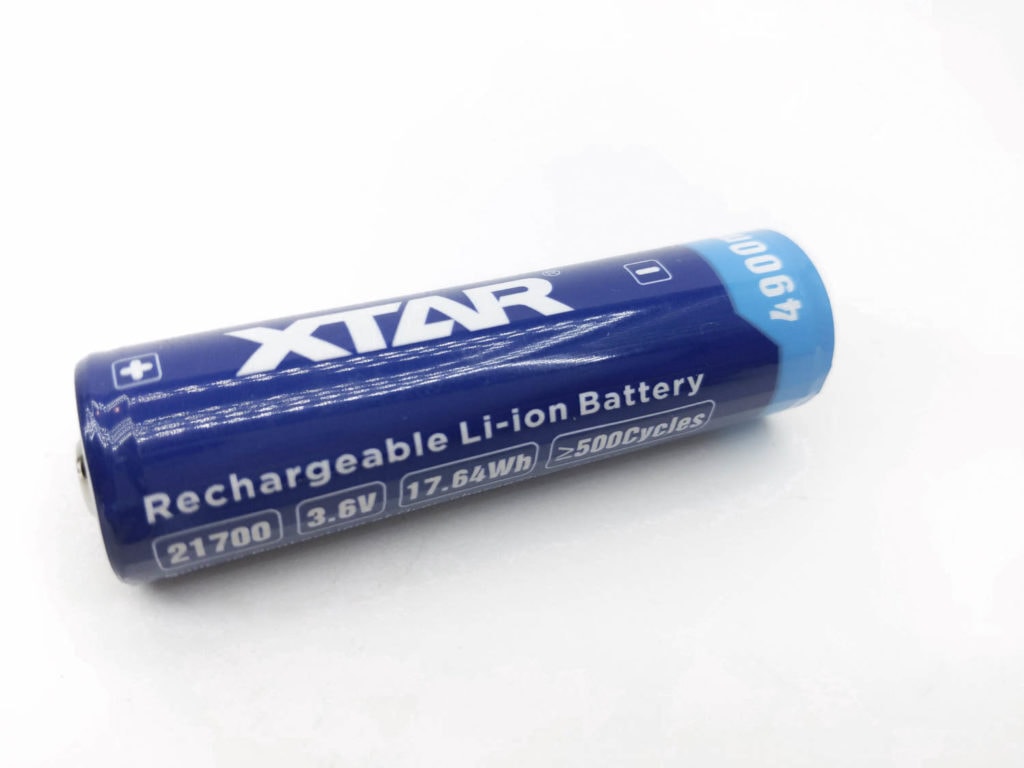
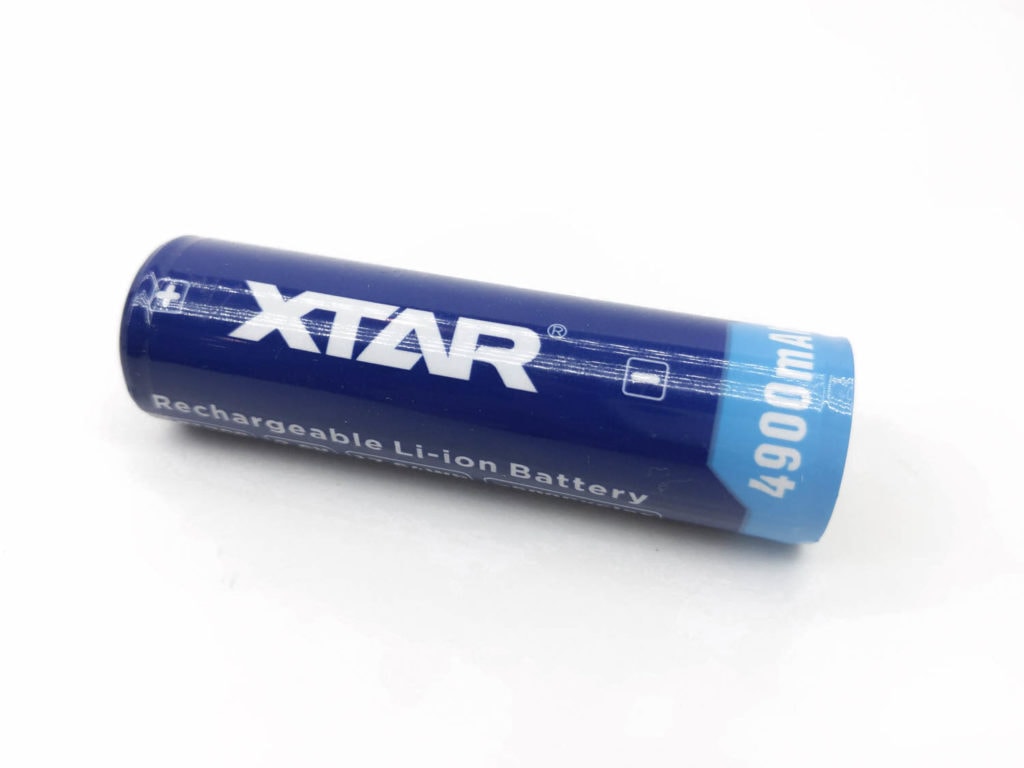
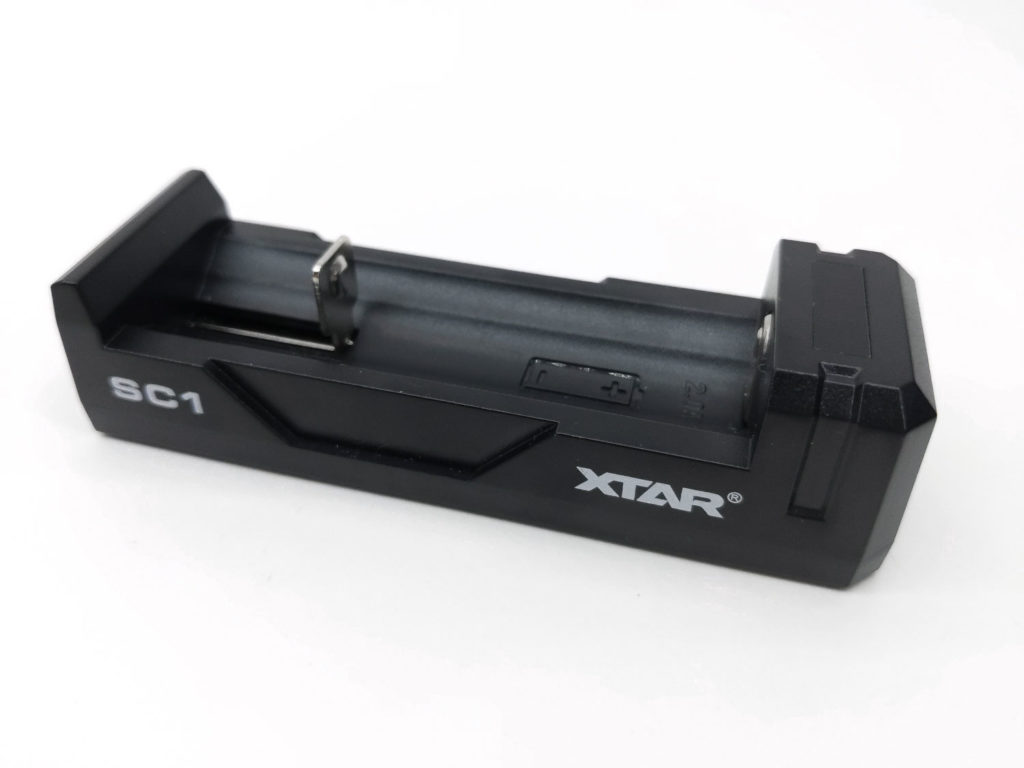
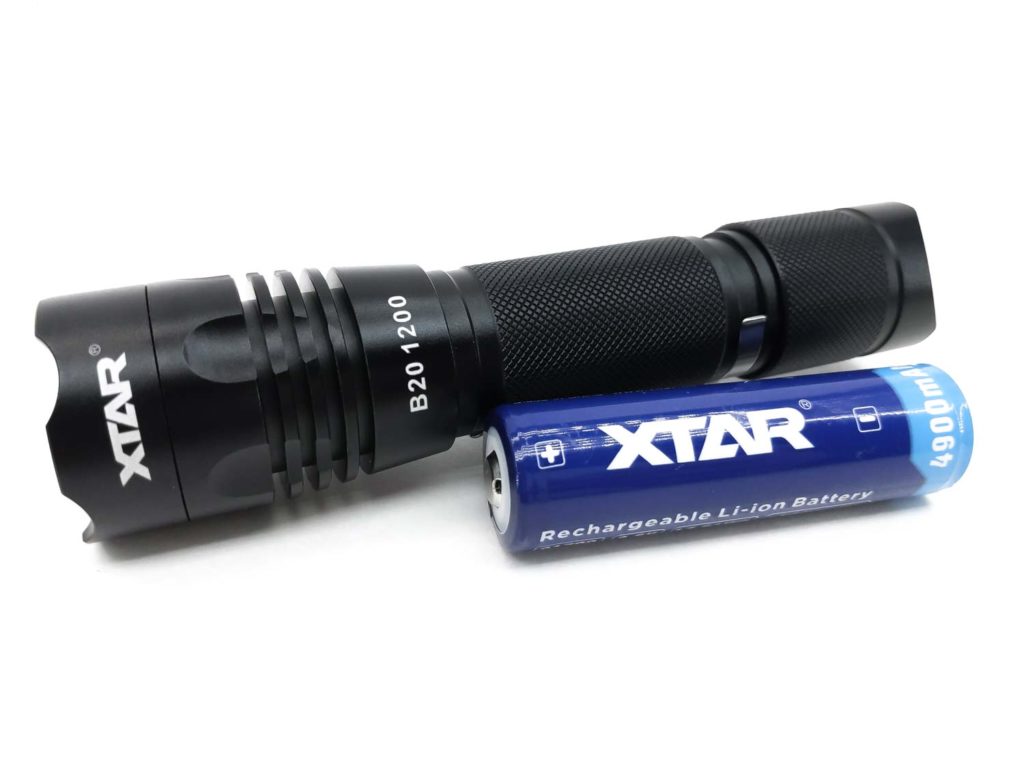
Performance
For current measurements, an ANENG AN8008 multimeter and UNI-T UT210E clamp meter were used. Lux was measured by a UNI-T UT383 BT at 10 meters. Lumens were measured in a homemade lumen tube using a TSL2591 sensor, calibrated with a Maukka calibration light. Testing was performed with the included Xtar 4900 mAh 21700 battery.
Parasitic drain:
- N/A (has clicky switch)
Runtime graph
Because the driver appears to be a buck driver, it’s output can look a little unusual at the very beginning of the output tests. As the light warms up, it actually gets a bit brighter.
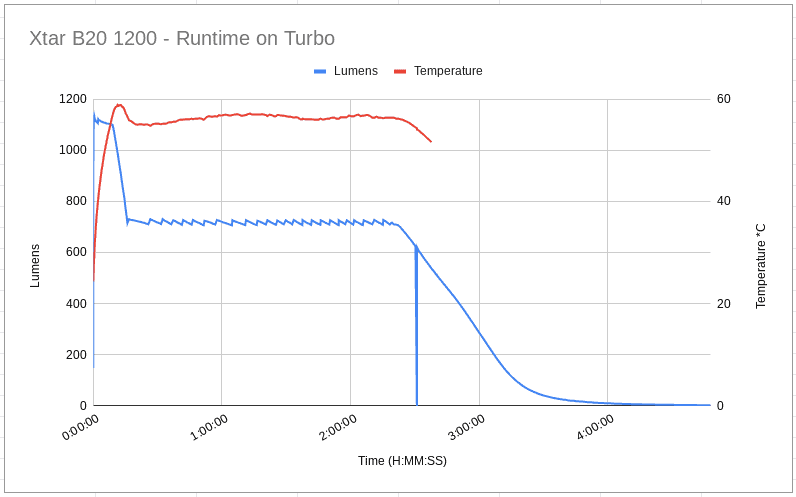
The Turbo test started out at 953 lumens. As it warmed up, it peaked at 1134 lumens at 29 seconds into the test. At 9 minutes into the test, the B20 was at 1102 lumens and the temperature began to approach 58°C. At that point, ATR (advanced temperature regulation) kicked in and output began to slowly decrease. It finally settled in around 732 lumens and 56°C and more or less stayed there until 2 hour and 23 minutes at which point output began to drop. The low voltage warning blinks occurred at 2 hours and 31 minutes. Output reached the ANSI 10% threshold at (113 lumens) at 3 hours and 13 minutes which is very close to Xtar’s claim of 3.5 hours.
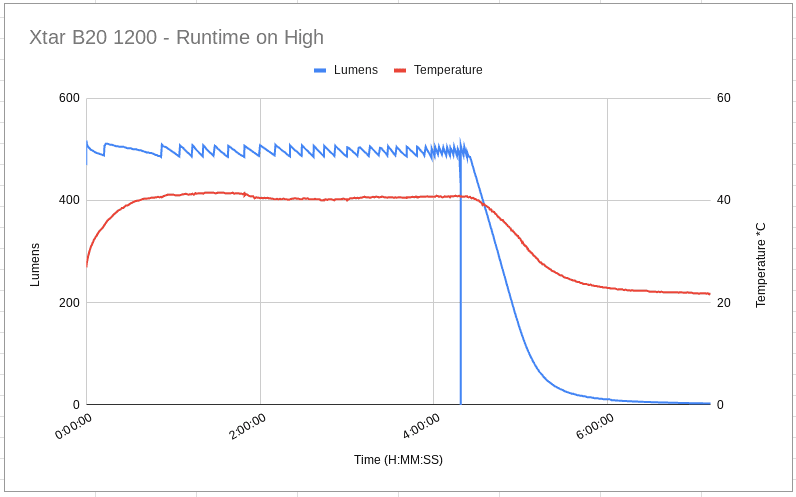
The B20’s test in High mode started at 470 lumens but quickly reached 518 lumens. It stayed right around 500 lumens for most of the test with temperatures around 40°C. The low voltage warning happened at 4 hours and 18 minutes while output was still around 500 lumens. A few minutes later, output began to slowly drop and eventually crossed the 10% mark (51 lumens) at 5 hours 17 minutes, barely short of the 5.6 hour specification.
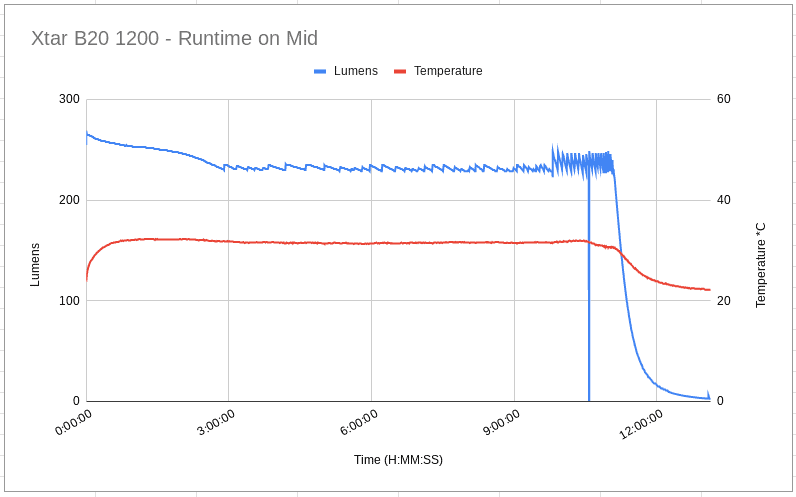
Mid mode was pretty uneventful, starting at 269 lumens and slowly ramped down to 233 lumens over the course of the first few hours where it stayed until output began dropping at 11 hours 5 minutes. The low voltage warning had happened at 10 hours 34 minutes, and it crossed the 10% mark (27 lumens) at 11 hours and 47 minutes, a little bit short of the 13.5 hour spec.
Lumen measurements (for each mode)
| Mode | Amps | Specs | 10min | 30 sec | start |
|---|---|---|---|---|---|
| Low | 56 mA | 30 lm | 30 | 30 | 30 |
| Med | 389 mA | 270 lm | 262 | 266 | 269 |
| High | 820 mA > 920 mA @ 30s | 600 lm | 491 | 510 | 470 |
| Turbo | 1.99 A > 2.54 A @ 30s | 1200 lm | 1056 | 1134 lm | 953 |
Throw numbers:
- 17,700 cd (spec: 14,400 cd)
- 266 meters (spec: 240 m)
- 291 yards
Beamshots
- Beam shots of the building are taken at 15 m (16 yd) using a Pixel 3 set to ISO 200 with 1/10 second exposure time
- Beam shots of the playset are taken at 30 m (33 yd) using a Pixel 3 set to ISO 200 with 1/2 second exposure time. The trees in the background are around 65 m away.
- Xtar B20 1200
- Wurkkos FC11
- Sofirn SP35
- Astrolux EC01

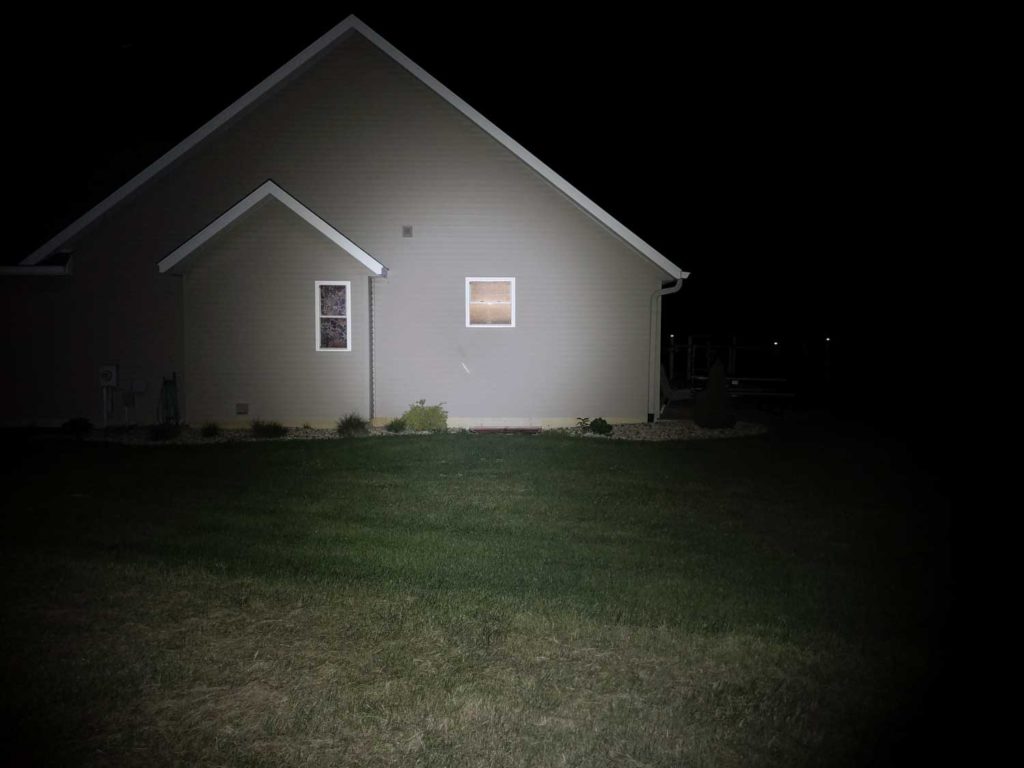
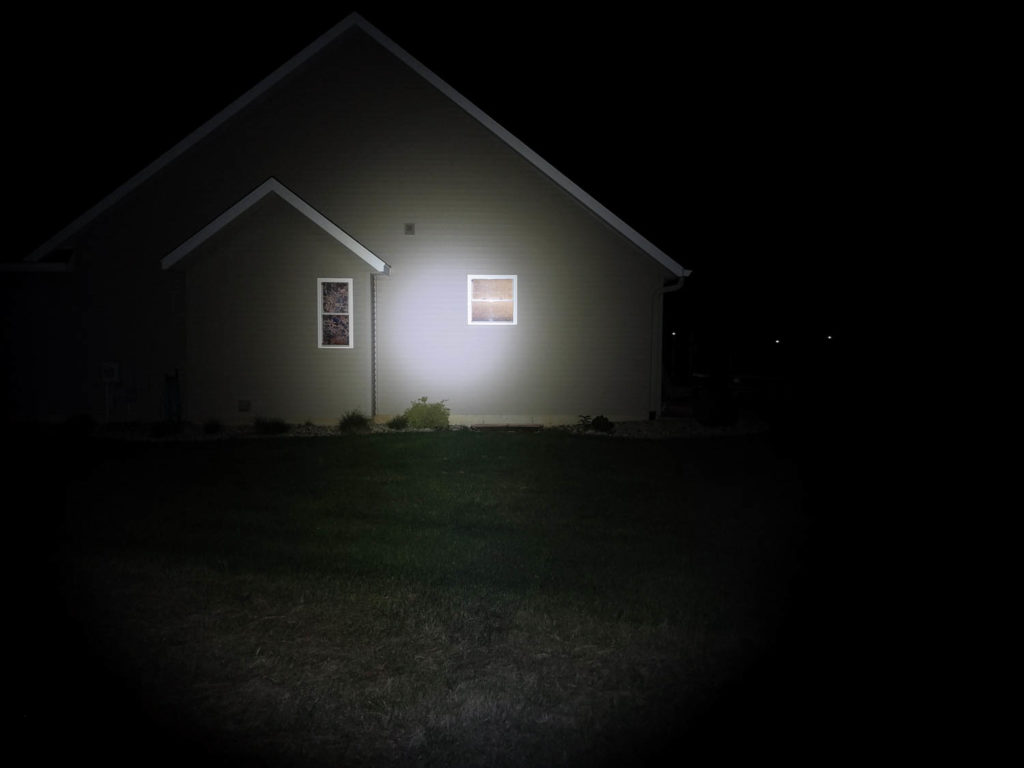
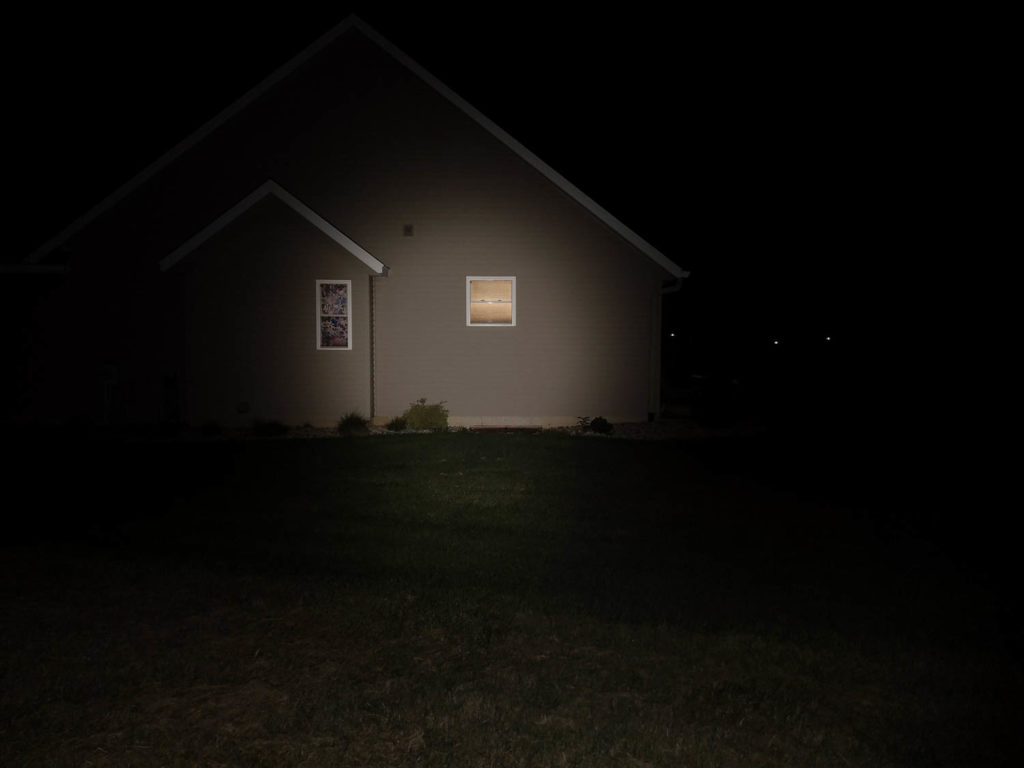
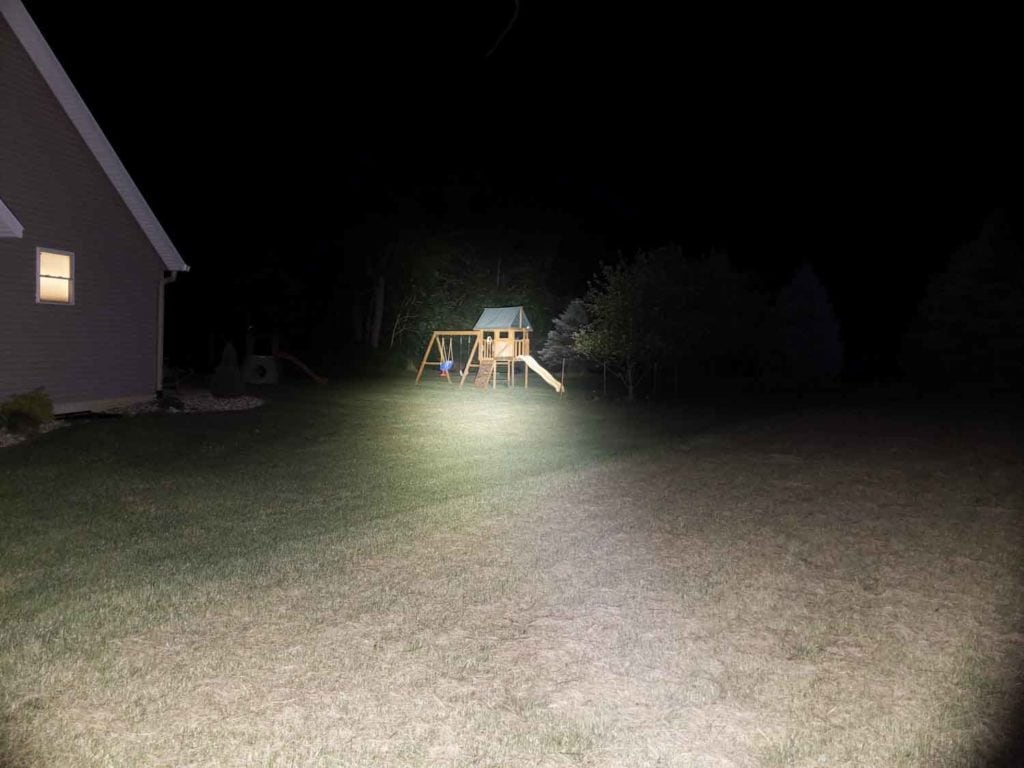
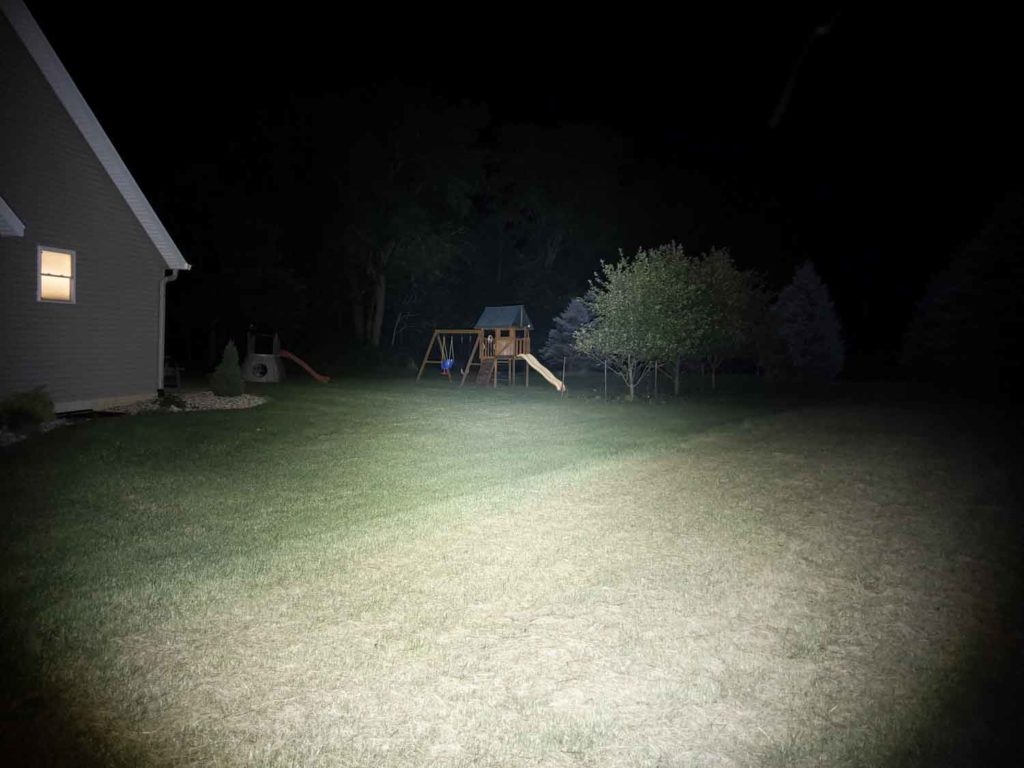
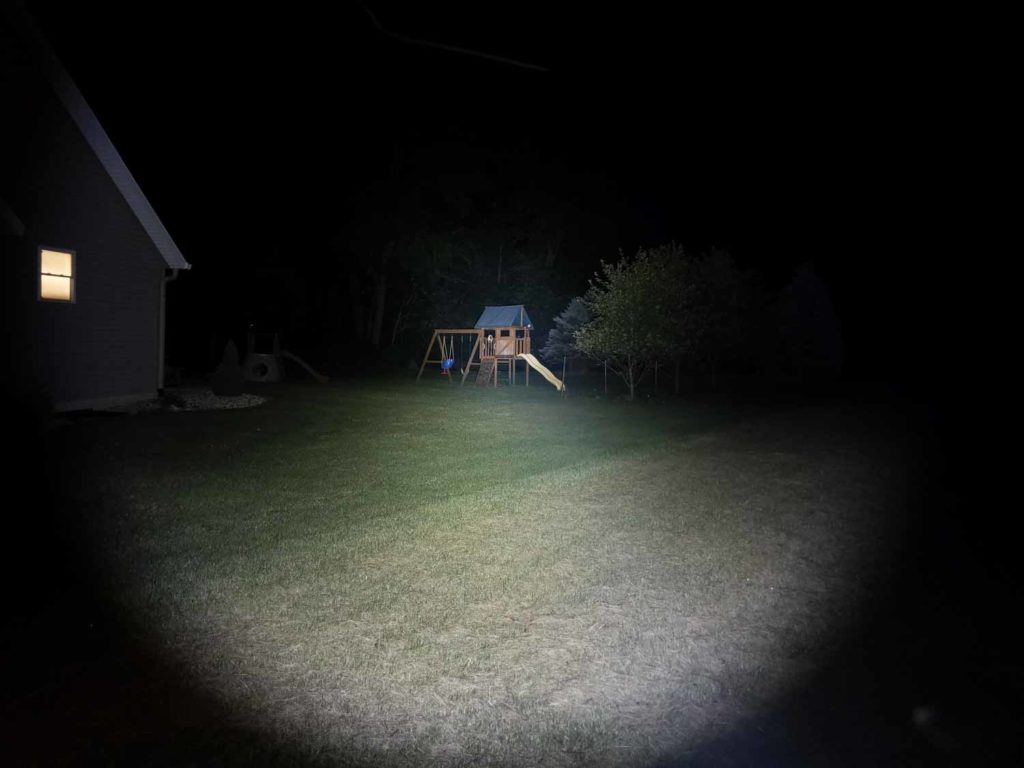
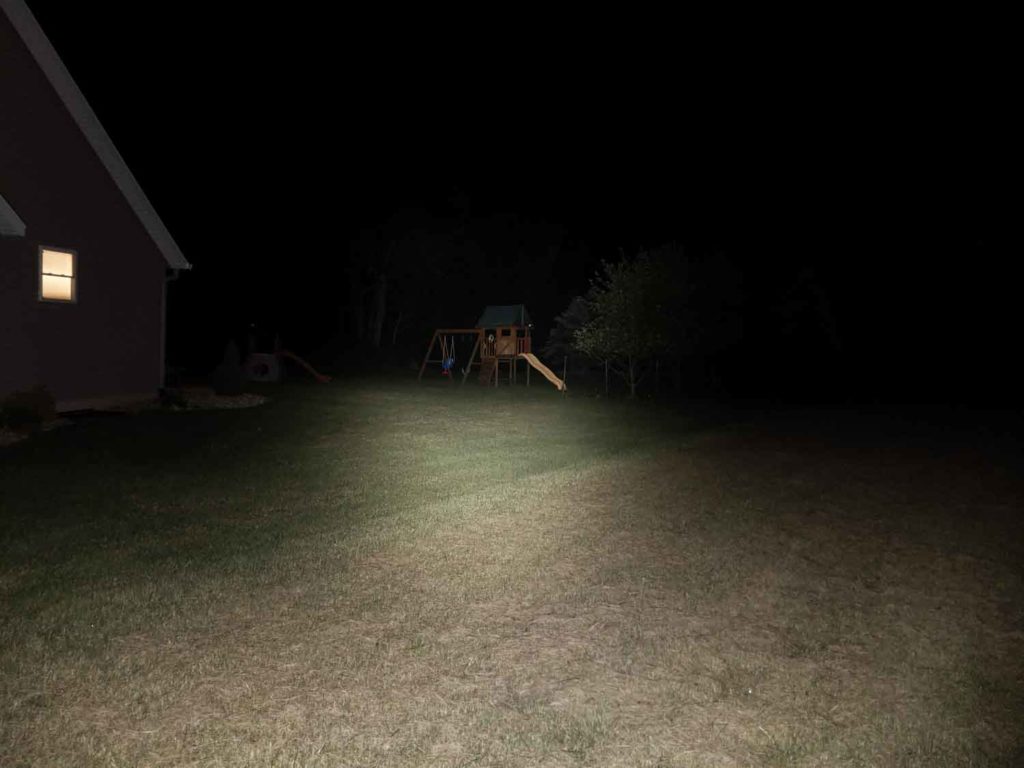
Disclaimer: This flashlight was sent to me for review at no cost by Xtar. I have not been paid to review, nor have I been holding back on problems or defects.
Final Verdict
Pros
- Solidly built
- Well regulated
- Good temperature regulation
- Full kit with better-than-average charger
Cons
- No low voltage protection (just warning)
- Strange mode order
- Strobe mode too easy to activate
Explanation on star ratings:
1: Avoid: my phone flashlight would be a better choice – 2: Poor: significant defect or issues, much better options available at the same price – 3: Average: some defects or issues – 4: Good: recommended (minor issues) – 5: Great: highly recommended

4 stars: ★★★★
The Xtar B20 1200 is a solidly built, attractive, 21700 flashlight. There’s a lot going for it like long run times and good heat management. And unlike many flashlight kits that include a “just okay” charger, the B20 kit includes a nice fast Xtar SC1 with 4-bar read-out.
Unfortunately, I feel like firmware design is holding back an otherwise great flashlight. While there is a low voltage warning, there is no low voltage protection and even the battery’s protection circuit didn’t stop it from getting down to 2.48 volts. The mode order of High > Turbo > Mid > Low is confusing. And I accidentally activated strobe mode almost every time I tried to change modes. So on the plus side, all of these things can be addressed with some basic firmware updates.
The Xtar B20 is physically a great light that has a lot of potential, were it not for a few UI concerns.
Xtar B20 For Sale
1lumen selects and reviews products personally. We may earn affiliate commissions through our links, which help support our testing.